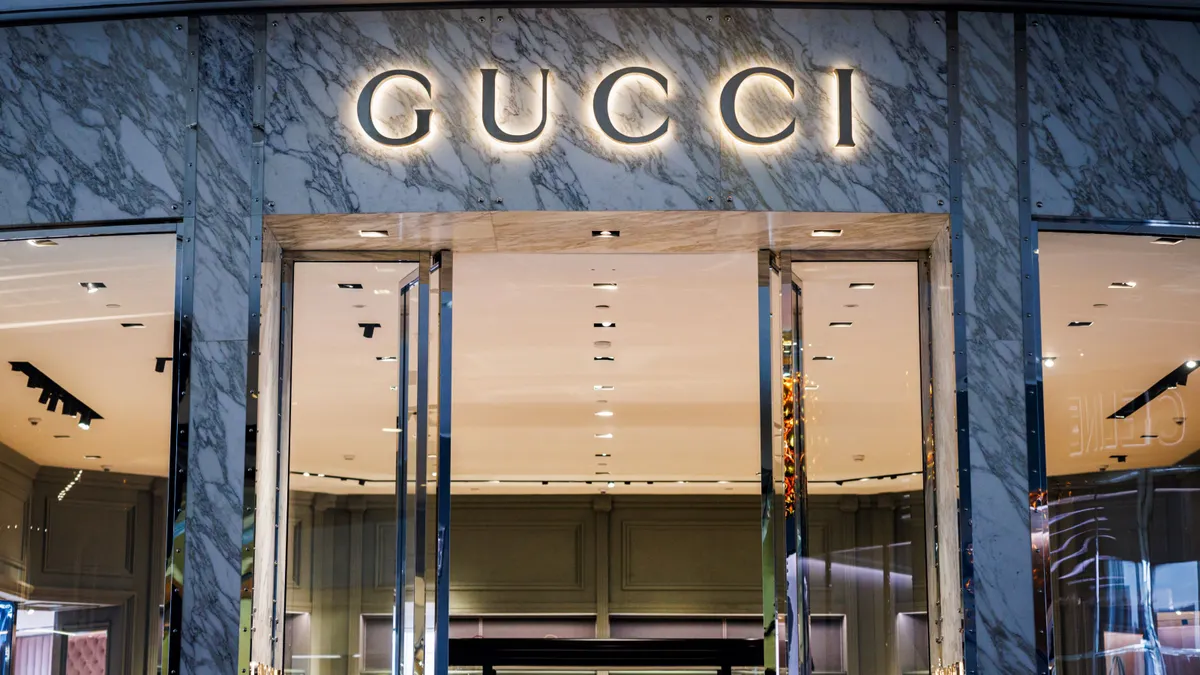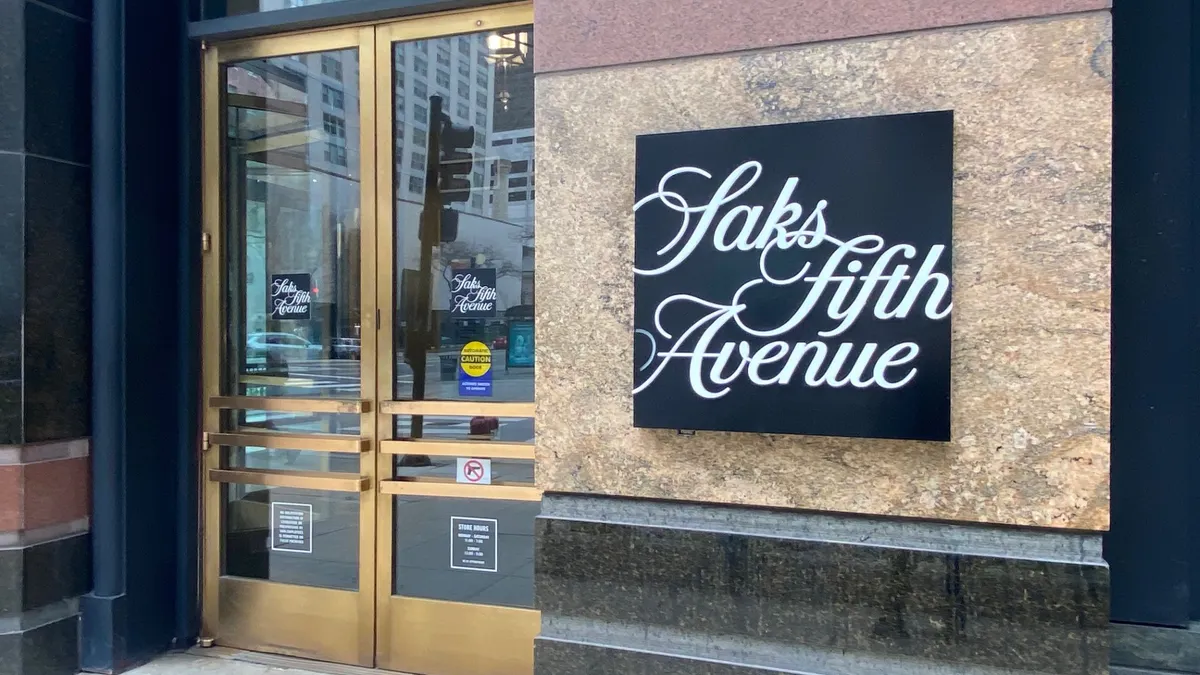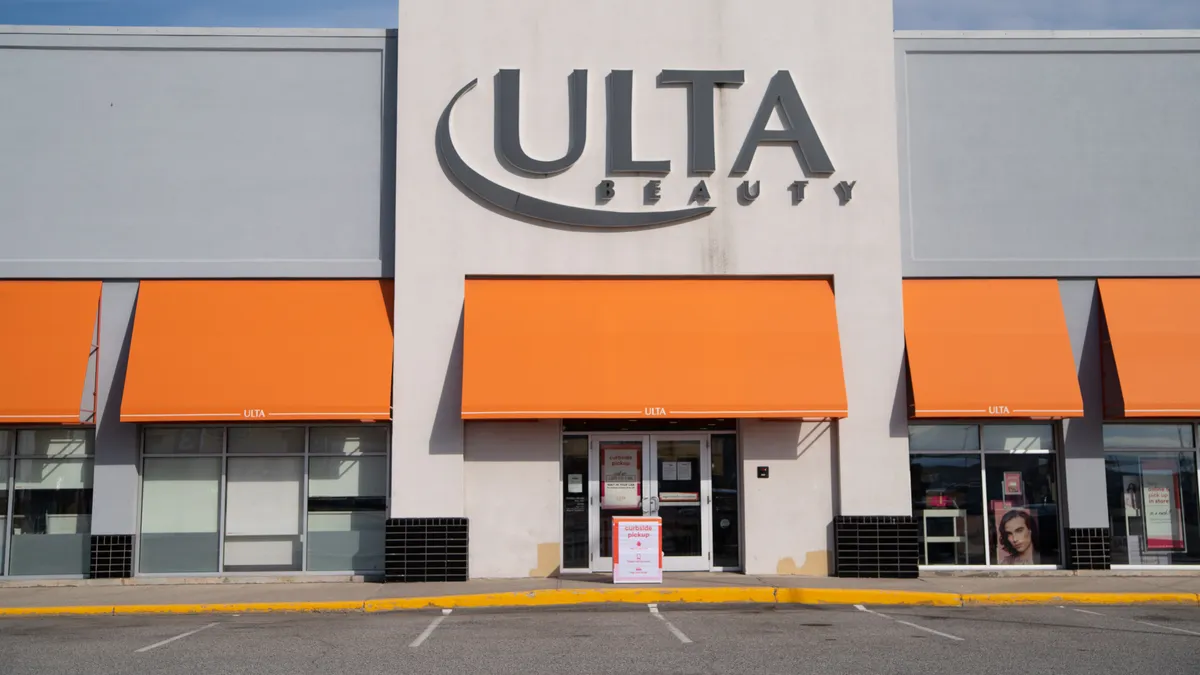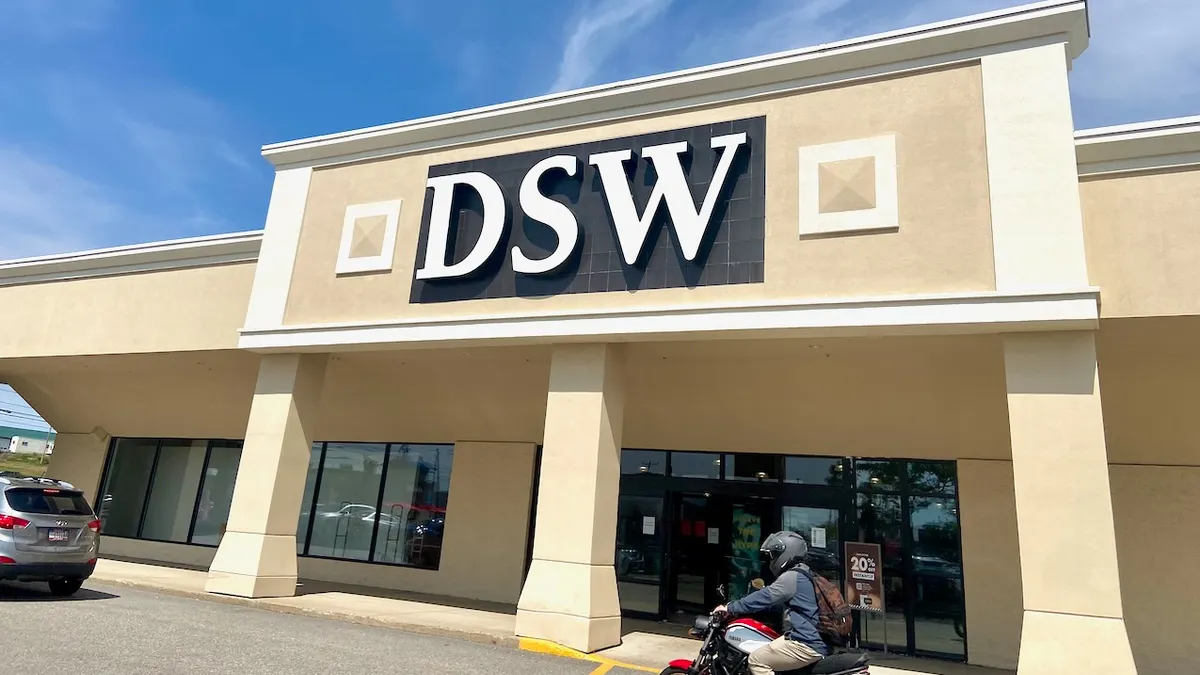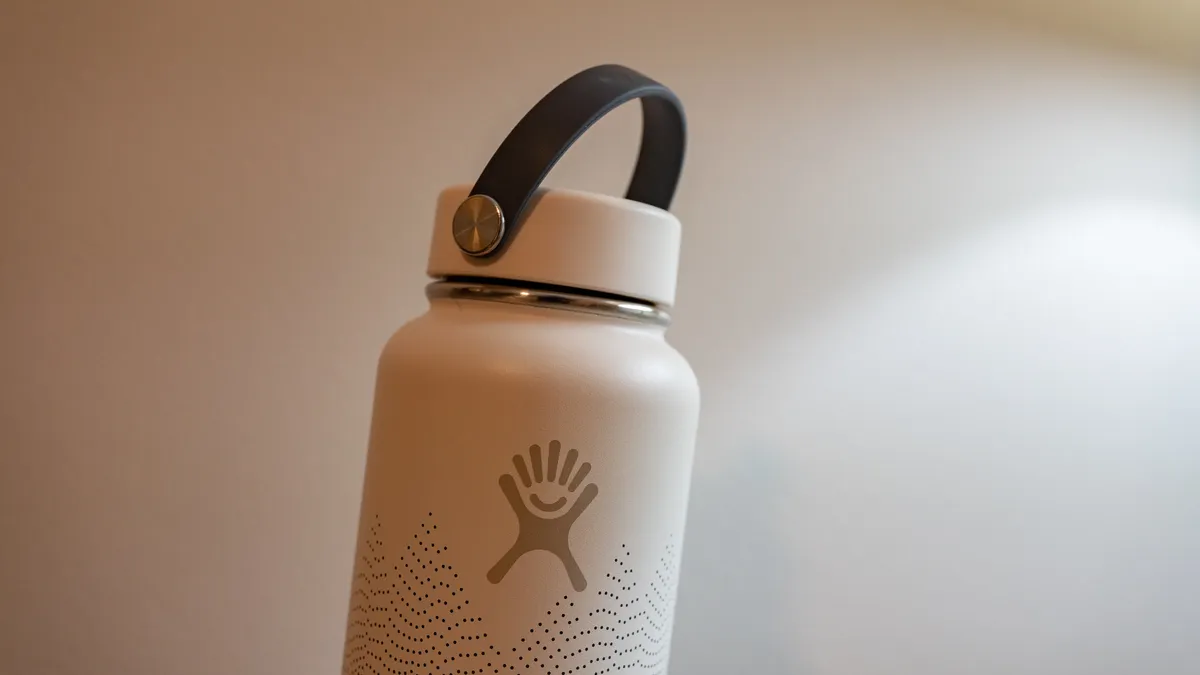Lands’ End has rarely been a company that creates a lot of buzz. In fact, for years the Dodgeville, WI-based casual outfitter was best known for sensible (if stodgy) apparel and bland-yet-practical accessories and home furnishings that barely made any waves at all.
So when Italian-born Federica Marchionni, formerly U.S. head of Dolce & Gabbana, was tapped as Lands’ End’s new CEO in February 2015, it raised a few eyebrows. So did her pledge to attract a younger, hipper consumer. Then she interviewed feminist icon Gloria Steinem for the spring 2016 catalog, and caused an absolute outcry among conservatives… which was nothing compared to the furor Marchionni faced when she later pulled the catalog and publically apologized. Marchionni followed that up by introducing the Lands’ End Sport athleisure line and relaunching the Canvas line, complete with $600 jackets and $175 pink cocktail jumpsuits. That’s when the fashion press people took notice.
Marchionni’s ride came to a dramatic end on Sept. 26, when the Lands’ End board of directors parted ways with her after only 19 months on the job; while the company officially said that Marchionni resigned her post, multiple news outlets indicate she was pushed out. Her departure came amidst criticism that she was moving Lands’ End’s fashion agenda too quickly, that her New York City-based lifestyle was too far removed from Lands’ End heritage and its staff, and that she was trying too hard to turn Lands’ End into something it’s not.
It’s unfair to blame Marchionni alone for Lands’ End’s problems, though. The board of directors agreed to let her work and live in New York when she was hired, and it’s unlikely she was making major changes without their approval. Furthermore, Lands’ End has had six CEOs since 2002: Marchionni’s departure may reflect less on her poor fit at the company and more on how impetuous the Lands’ End board itself is, and how desperate it is to implement change.
“Success has so many parents, and failure is an orphan,” said Steven L. Marotta, senior vice president and senior research analyst at C.L. King & Associates, which provides investment and research services to corporations and institutions. “I think that the near-term result of the plan [Marchionni] was implementing is that everyone is now trying to take themselves out of the equation and pin it on her.”
That’s not to say change hasn’t been needed at the brand. It’s just been difficult to enact, and Marchionni may have lacked the internal structure she needed to make her changes work, says Greg Portell, who leads the consumer and retail practice at global strategy and management consulting firm A.T. Kearney.
“Pushing transformation through an organization is hard, but in the case of Lands’ End, it was completely justified,” Portell said. “Boards need to balance the reality of the business with the organization’s capacity for change. For Lands’ End, transformation needed to happen fast.”
Too much, too fast
Lands’ End has been a troubled brand for a long time. Ever since it was purchased by Sears in 2002, it’s been struggling to define itself for a millennial generation. That struggle has continued even after Sears got rid of Lands’ End in late 2013, distributing shares to investors in a desperate attempt to raise cash. To some extent, Lands’ End (which declined Retail Dive’s requests for comment on this story) is still having problems distancing itself from that relationship.
“The company needs to figure out how to remove the tarnish from its long association with Sears,” said Dick Seesel, principal at Wisconsin-based Retailing in Focus, a retail strategy consultancy. “That relationship probably did more harm to the brand over the long haul than the changes that Marchionni tried to put into place. Lands’ End had a good identity, and sometimes it pays to stick to your knitting.”
Seesel says Sears may have sucked Lands’ End into its downward spiral. “Everything Sears has touched has not gone well,” he said. “It’s a slow-motion car crash.”
Marotta agrees that Sears’ ownership allowed the brand to languish, but sees a light at the end of the tunnel. “During the Sears years, Lands’ End was starved of systems and marketing and critical brand building, as well as customer facing requirements,” Marotta said. “I think they can distance themselves from Sears, and Marchionni was on the path to that.”
Still, most of Lands’ End 253 retail outlets are in Sears stores, and contractual obligations of the separation require that it must rent those locations from Sears through 2019. “What Marchionni was endeavoring to do was segment that Sears channel with the Lighthouse brand,” said Marotta, namechecking the casual label Lands’ End unveiled in late 2015. “That’s Branding 101, where you segment a brand by channel. The Lands’ End brand could be completely [direct to consumer] by fall 2017, so that the only Lands’ End in Sears by then would be Lighthouse. So that’s step number one.”
Even if Lands’ End were to begin exploring additional brick-and-mortar spaces (as it did under Marchionni’s reign with an upscale New York City pop-up store), it’s still unclear whether the brand has what it takes to reassert itself in a market that moved on without it.
“The question is, ‘How big is the brand space?’” Seesel said. “Lands’ End fits the same traditional outdoorsy casual profile as L.L. Bean, Eddie Bauer and Duluth Trading. Again, how does Lands’ End try to restore its luster from the pre-Sears days without trying to be something that it’s not?”
Seesel also has concerns about Lands’ End ability to create the kinds of experiences which are crucial to the millennial market, without having enough physical stores. One pop-up in New York isn’t enough.
“Most stores today are suffering from too much physical square footage while trying to grow their online sales,” said Seesel. “Lands’ End is an exception. It’s a company without enough stores, outside of its continuing presence inside Sears.”
The numbers haven’t been particularly encouraging for the company’s current strategy, especially as it relates to its direct business. Lands’ End reported second quarter net revenue was $292 million, down from $312.4 million year-on-year. In addition, its retail segment net revenue fell 4.3% to $45.5 million, driven by a 2.5% decrease in same store sales. But most notably, its direct segment net revenue declined 6.9% to $246.4 million. That last number is particularly troubling, because according to its latest annual report, covering fiscal 2015, direct segment net revenue was $1.21 billion, and total net revenue was $1.42 billion. That means direct represents over 80% of the company’s business.
However, in order to begin the process of recasting its store profiles and moving to create new shopping channels, Lands’ End will need to solve its systems and IT issues, building out its omnichannel capabilities and solving lingering internal communications and systems management issues. Marotta says that’s a critical short-term goal for the company, but once it’s solved, he sees brands such as Canvas being able to make real headway in spaces that have been abandoned by other companies.
“I believe there’s a lot of room in the market for high-end core basics,” said Marotta. “Gap has walked away from that market, and J. Crew has walked away from that market.”
Millennial maladies
The question then becomes whether Lands’ End can find a way to appeal to millennials. That’s not an easy proposition. Haplessly chasing the millennial customer didn’t go well for J.C. Penney, and the company spent years trying to recover from its mistakes. Seesel says it would be a bad idea for Lands’ End to follow in those footsteps.
“J.C. Penney went through a period in 2012 and 2013 when it was intent on turning its model upside down,” Seesel said. “They ran when they should have walked, and it cost them billions in sales volume.”
Seesel says that by discontinuing its largest private label, St. John’s Bay, J.C. Penney effectively shot itself in the foot. “It was just jeans and polo shirts. Not exciting, but it was their biggest business, and [then-CEO Ron Johnson] said, ‘I don’t like this, and it speaks to a customer I don’t want in the stores.’ So they walked away from at least a billion dollars in sales volumes, and scattered that customer to the competition. And it’s not clear where she went, because Macy’s and Kohl’s didn’t benefit. But she wasn’t buying at Penney’s. It’s difficult to claw your way back from that.”
Seesel cautions that Lands’ End may be risking similar problems if it decides to pursue millennials at the expense of its existing customer segment. “You need to be true to your brand,” he said.
Lands’ End plans to stick to its new branding strategy for the time being, though. At Shop.org Retail’s Digital Summit 2016 conference in Dallas, held late last month just days after Marchionni’s exit, Becky Gebhardt, Lands’ End executive vice president and chief marketing officer, said that the new branding profiles were necessary for the company’s forward momentum.
“We felt we weren’t moving forward with the times,” Gebhardt said during her Shop.org presentation, adding that the “customer wasn’t quite as passionate about us as she used to be… Our core objectives are not going to change. We are well positioned to continue [the brand’s evolution].”
According to Gebhardt, that vision means acting “less like a company and more like a brand.” She also shared with the Shop.org audience her hopes that the relaunched Canvas brand, with its modern fits and styles, and Lands’ End Sport would attract new, younger customers and bring back core customers who had moved on.
That might be more challenging than simply changing the fit on a pair of pants or adding a new branding profile.
“Millennials continue to present a challenge for all retailers,” said Portell. “The issue is less about the audience and more about the ability of current marketing teams to address those consumers. Rather than blame the consumers for being ‘too fickle’ or ‘too distracted,’ perhaps we should be challenging marketing teams to be ‘more relevant’ and ‘more agile.’”
The task becomes even more demanding now that Lands’ End is trying to woo the same consumer as everyone else.
“Competition for the millennial dollar comes from both within and outside of the fashion industry,” said Marshal Cohen, chief industry analyst at The NPD Group. “Between online and lower prices, fashion stores like H&M and Zara, even J. Crew and Ann Taylor, are challenged. Now, add in the athleisure movement and lifestyle, and Lands’ End has some more challenges to remain relevant. Even L.L. Bean has found a way to reach the millennial with the boot.”
The question isn't who the competition is, but what Lands’ End has to do get millennials to notice, Cohen adds. It’s possible, of course, that a complete overhaul, such as the one Marchionni was trying to implement, may be the only solution moving forward.
“There’s almost no way to reach a younger customer with the Lands’ End brand,” said Marotta. “It’s exceedingly difficult, because the benchmark is that it’s their parents’ brand. In order reach a younger customer, Marchionni launched Canvas and Lands’ End Sport and diffused Lands’ End into the Sears channel, which they’re mandated to do for the next couple of years anyway.”
Assuming the board of directors follows the path Marchionni set, Canvas and Sport may yet have a shot at winning over a younger customer. “Canvas was a gateway,” said Marotta. “It wasn’t about selling 10,000 $600 jackets. It was about maybe selling 100 of them, and having people stumbling onto the brand in the process.”
Who will replace Marchionni?
The task of carrying on — or revising — Marchionni’s plans for Lands’ End will naturally fall to the next management team, and until those people are permanently in place, the company is in limbo with the holiday season fast-approaching. “Branding and the top line solutions will likely be stalled until new leadership is in place,” said Portell. “That leadership may come from the existing team.”
As it stands, the Lands’ End board has engaged the services of Heidrick & Struggles International to find a new permanent chief, appointing as interim CEOs Executive Vice President and Chief Merchandising and Design Officer Joseph Boitano and Chief Financial Officer, Chief Operating Officer and Executive Vice President James Gooch.
Boitano, formerly of Saks Fifth Avenue and Bergdorf Goodman, has extensive experience in both fashion and systems, and oversaw omnichannel implementation with Saks Direct. Gooch, also now treasurer as of September 28, is more of a numbers guy: Formerly CEO of RadioShack, which he ignominiously left in 2012 as the company began its decent into bankruptcy, Gooch also sits on the board at Sears Hometown and Outlet Stores, where he’s been a director since March 27, 2013.
Gooch was brought on at the end of January 2016, possibly as a way to monitor and temper Marchionni’s fast-moving plans. He’s not the only Sears connection the Lands’ End brand still retains: The company is majority-owned by Edward S. Lampert, the CEO of Sears Holdings and founder, chairman, and CEO of ESL Investments. Lampert became CEO of Sears in January 2013, just 10 months before the company dropped Lands’ End.
The combination of these connections makes it difficult to imagine that Lands’ End plans to shake its association with Sears anytime in the near future. It’s even possible that Gooch may end being appointed permanent CEO, assuming he’s willing to make moves that Marchionni would not. “It will be important to insist that the new CEO be based in Dodgeville and take a more evolutionary approach to change,” said Seesel.
Regardless of who’s in the driver’s seat, Lands’ End will need to find its groove before too long. As they say, winter is coming.
“The reality is that if Lands’ End doesn’t fix their economics, they won’t be in Dodgeville, WI anymore,” said Portell, who stresses that until the board establishes what the right pace should be, it’s somewhat disingenuous to call any pace ‘too fast’ or ‘too slow.’ The question is less about speed of change and more about optionality. If the board was so concerned with the change being too fast, what was the option to go slower? Investors don’t have the patience to wait for a three- to five-year turnaround.”







